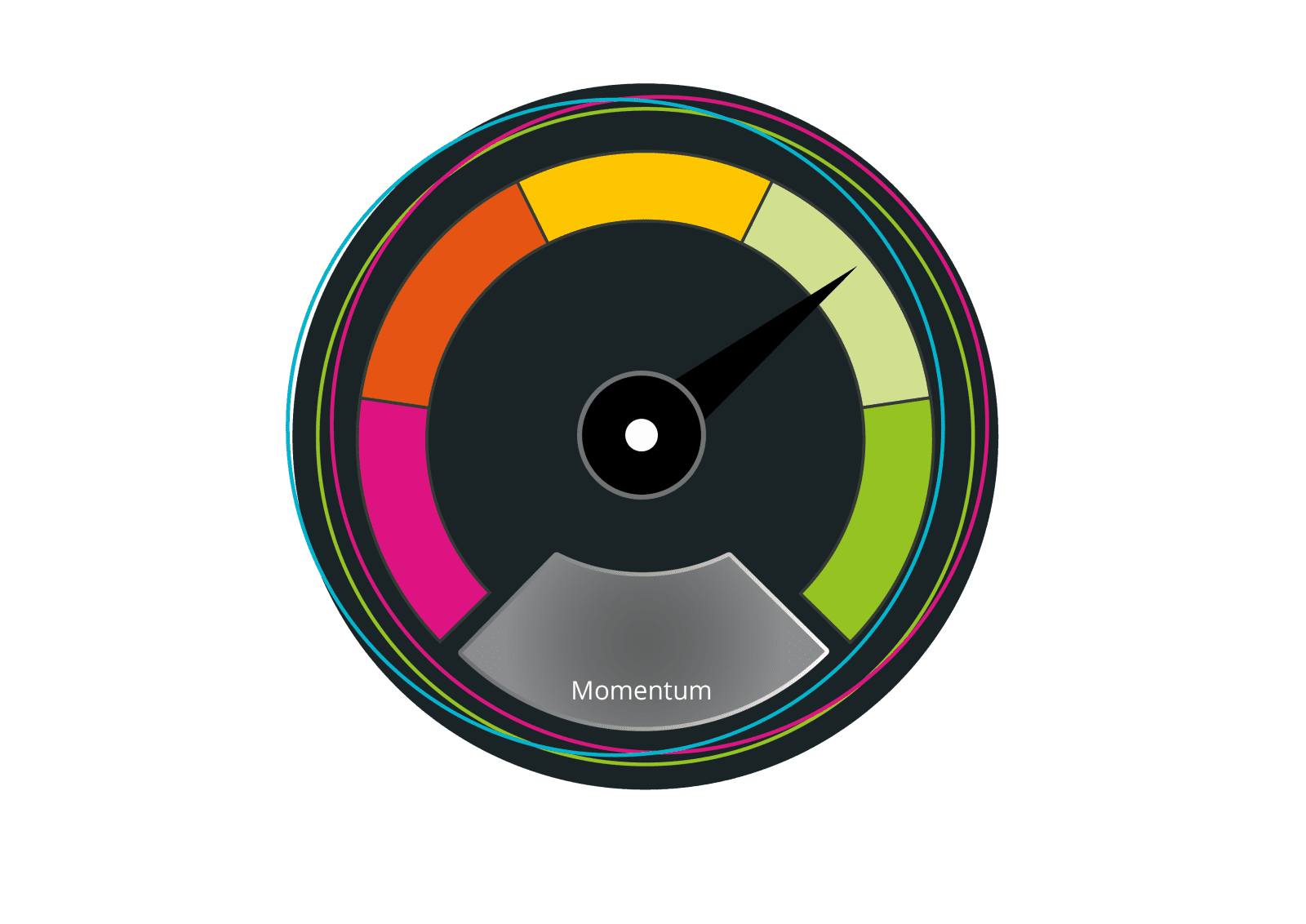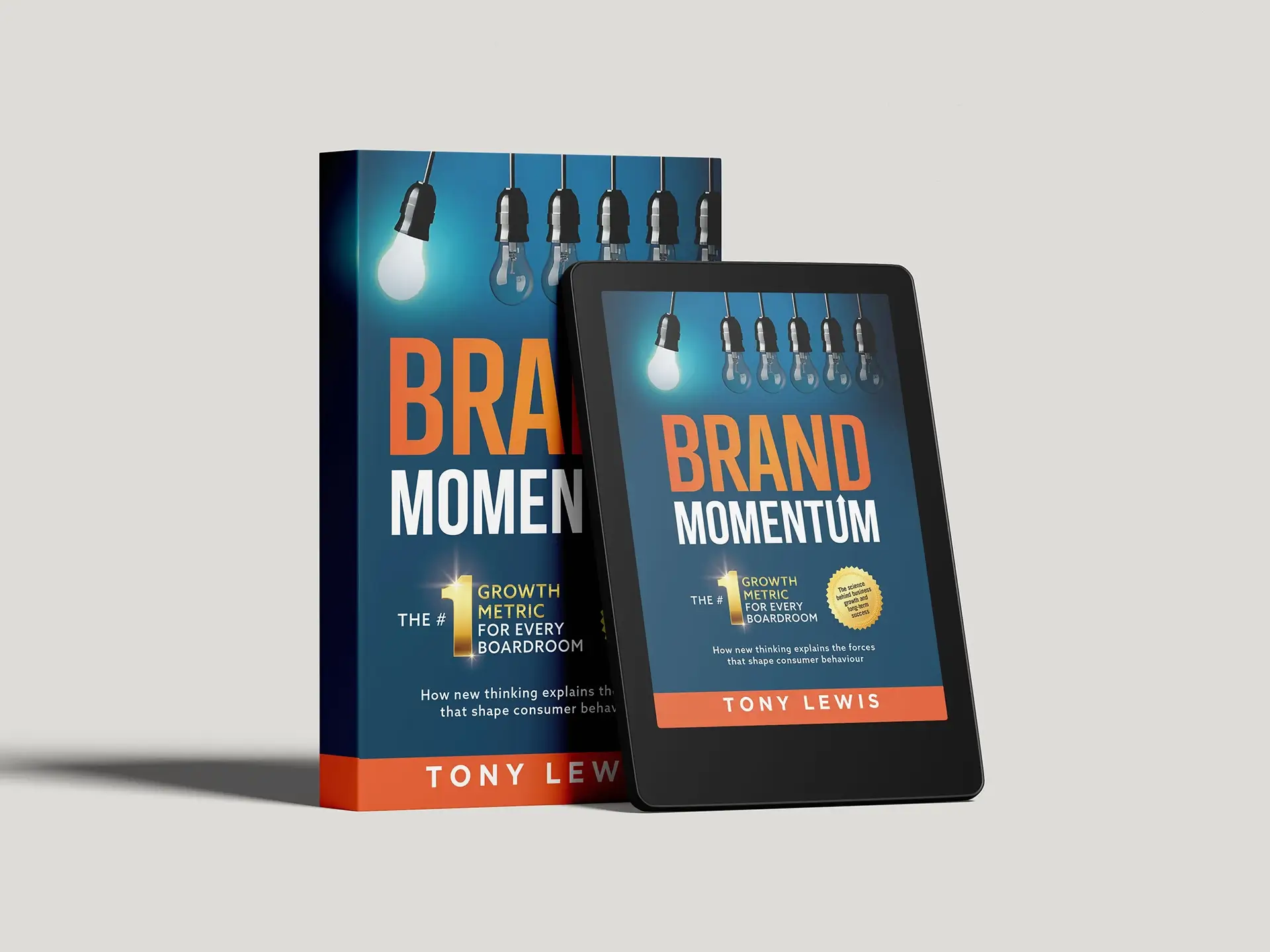Brand Momentum
The Driver of Growth

What is Brand Momentum?
Brand Momentum refers to the growth potential for your brand and its likely future trajectory. The metric measures the extent to which your brand is seen to be growing or declining against your competitors.
Brand Momentum is one of the strongest indicators of growth. It shows the potential for a brand to grow more than any other metric. Momentum works on the Wisdom of Crowds and despite no individual likely to know, collectively consumers have a knack for knowing which brands are likely to be growing and which aren’t.
Why is it important?
Brand Momentum represents the perceived relative position of your brand in the market. It is not about where your brand sits in terms of sales, or financial analyst stats – it is about how it’s perceived by the people whose opinions really matter – consumers.
Brand Momentum is, therefore, seen as a better indicator of growth than the traditional Net Promoter Score (NPS), because it encompasses a wider field – it includes perceived growth amongst everyone who is ‘brand aware’, rather than just those who are brand users.
What drives brand Momentum?
Momentum is a complex KPI and is driven by your marketing activity and spend, product availability, brand image and your brand proposition and positioning.
Brand growth and Momentum is ultimately a comparative metric which should be used to benchmark your brand against others. Ultimately, for any brand looking to grow or disrupt a market this is the metric to go for.
Consumers’ perception of your brand, as a whole, is vital. It is not just about the product or service that you offer – it’s about whether you are seen to be dynamic and different to your competitors. It is your brand personality and whether you demonstrate progression, truth, leadership and innovation.

Ideally, every business wants to be seen as ‘growing’ – it implies innovation, evolution, and increased customer base, less risk for consumers and, therefore, a higher correlation to increased sales.
But it is worth noting that a ‘stable’ brand that doesn’t advocate switching or changing quickly (think automobiles or banks) can still secure a steady flow of consumers. For some markets, the perception of rapid changes can be less favourable than that of steadiness and reliability.
If your brand is perceived to be ‘declining’, it is important to take action. It’s likely other brands have overtaken you; you’ve become less relevant or you are no longer in tune with your customer’s needs. You need some new direction.
But there are always exceptions to this rule. A prime example of a product that has been in a slow state of decline for many years is Chanel No.5. Why is it in a slow state of decline? It is arguably one of the most well-known scents globally. But consumers tend to change their perfume frequently, so unless brand loyalty is high, they will slowly convert to something new. Chanel No.5’s Brand Momentum typically reaches a certain point of decline, at which point an advertising campaign reinjects interest. The result? A renewed growth stage.
We’ve predicted brand momentum being low and it turning into the downfall of a brand. The prime example would be the work we have done in the Airline Industry. We noticed how Monarch was in a state of heavy decline, with the brand failing to recoup from its trajectory and inevitably went bust. It goes to show how our momentum generates accurate areas of both success, which should be used as a sign of what a brand does right, but an alarming metric when your brand is facing the lower scores of momentum, highlighting how action must be taken to change before it is too late.

Brand Momentum The Book
The #1 Growth Metric for Every Boardroom
Brand Momentum, is the new groundbreaking book that’s packed with cutting-edge research, innovative strategies, and the psychology behind momentum theory. This is the playbook every marketer and business leader needs in their arsenal to understand how brands truly grow and get ahead of the game. Don’t take our word for it – read the reviews below.
Read how to use the brand momentum book to leverage the information for practical implementation and where to start reading for different knowledge levels:
8 Killer Brand Metrics
Running brand tracking surveys over time will allow you to spot trends over time and allow you to take action quicker. But you’ll need to measure more than brand metrics if you want truly actionable research, so Welcome to BrandVision.
Welcome to BrandVision
Metrics to Turbo Charge your Strategy
BrandVision is our flexible brand evaluation system that can be fully customised to your requirements. From self-serve to fully managed BrandVision offers tracking for brands of all shapes and sizes.
Brand Awareness
The Battle for the Mind
Many marketers believe Brand Awareness is a single metric – in truth, it’s a lot more complex than that! As experts in brand awareness measurement, we’d like to explain why.
Behavioural Economics has shown the importance of Availability Bias and that winning customers’ choices means being front of mind. Brand Awareness metrics include; Prompted Brand Awareness, Brand Recognition and Brand Recall. Together we call it Mindshare.
Brand Magnetism
Magnetism attracts Customers
Part of the Brand Funnel, Magnetism refers to the attraction your brand has with the target market.
There are two aspects to brand Magnetism. Firstly the strength of appeal and interest in the brand. Secondly, it is about the segments and groups interested in the brand. Understanding who, and who isn’t interested in your brand are the first steps in creating a strong marketing and brand strategy.
Brand Magnetism is the holy grail for many brands as it is often associated with some of the best and most iconic brands in history.
Brand Love
The Power of Love
The concept of Love in brand relationships has been receiving immense and escalating attention. It is considered by many experts as the essential ingredient for capitalising in today’s new order.
Brand Love underpins the consumer-brand relationship. It’s not an emotional or fluffy metric but rather the holy trinity of brand metrics, combining three powerful metrics: Relevance, Need and Trust.
Evaluation of brand tracking data has taught us, time and time again, that Relevance is arguably the most important metric of all – and is highly correlated with consumer behaviour.
Brand Health
8 Secrets to Brand Growth
The 8 Essential brand image metrics are:
- Brand Identity -Does your Brand identity have Clarity?
- Brand Noise – is your brand Grabbing people’s Attention?
- Newsworthy – Is your brand worth talking about?
- Outstanding – Do you offer exceptional Quality or Value?
- Variety – Is your brand flexible and have multiple uses or benefits?
- Accessible – Is your brand Readily Available and Convenient?
- On Trend – Is your brand Topical & Current?
- Ethical – Are you seen to be doing the right things?
Net Promoter Score
The Recommended Metric
Net Promoter Score or NPS for short, was initially developed in 2003 by Bain & Co to help companies earn customer loyalty and inspire employees,
NPS is an important part of consumer research for many companies as it is a measure used to gauge customer loyalty, satisfaction, and enthusiasm for a company
Further research carried out by Nielsen has supported the metric, confirming that word of mouth is the most influential element of consumers’ purchasing decisions.
Brand Emotion
Creating Strong Emotional Bonds
Branding is much more than just a brand name, logo or strap line. Successful branding is far deeper than that.
The best and strongest brands form an emotional relationship with their customers. We call this Emotional Branding, and along with Brand Love, these forms a pivotal part of our BrandVision approach and our Brand Equity Wheel.
Developed by Robert Plutchik, the Wheel of Emotion helps to explain how emotions work.
Brand Fame
What is Brand Fame?
Brand Fame (also known as brand leadership) is one of the key metrics that indicate whether or not your brand has a USP and is seen by consumers as a ‘Leader’, ‘Different’ or ‘Characterless’.
There are two very important aspects to Brand Fame: Uniqueness & Leadership, Brands with neither of these attributes tend to struggle, with little to set them apart from their competitors.
A great example of this is people’s desire to own the Apple brand. The high levels of Fame (Distinctiveness and Leadership) correlate highly with Brand Love and Consumer Loyalty – which ultimately has helped drive Apple’s dominant position in the market.








NEED SOME HELP?
Brand Momentum is one of the key metrics we use in BrandVision – our market-leading Brand Tracking tool. BrandVision allows you to truly explore the intricacies of how and why your brand is evolving and growing (or not), consumer perceptions, emotions and preferences.
